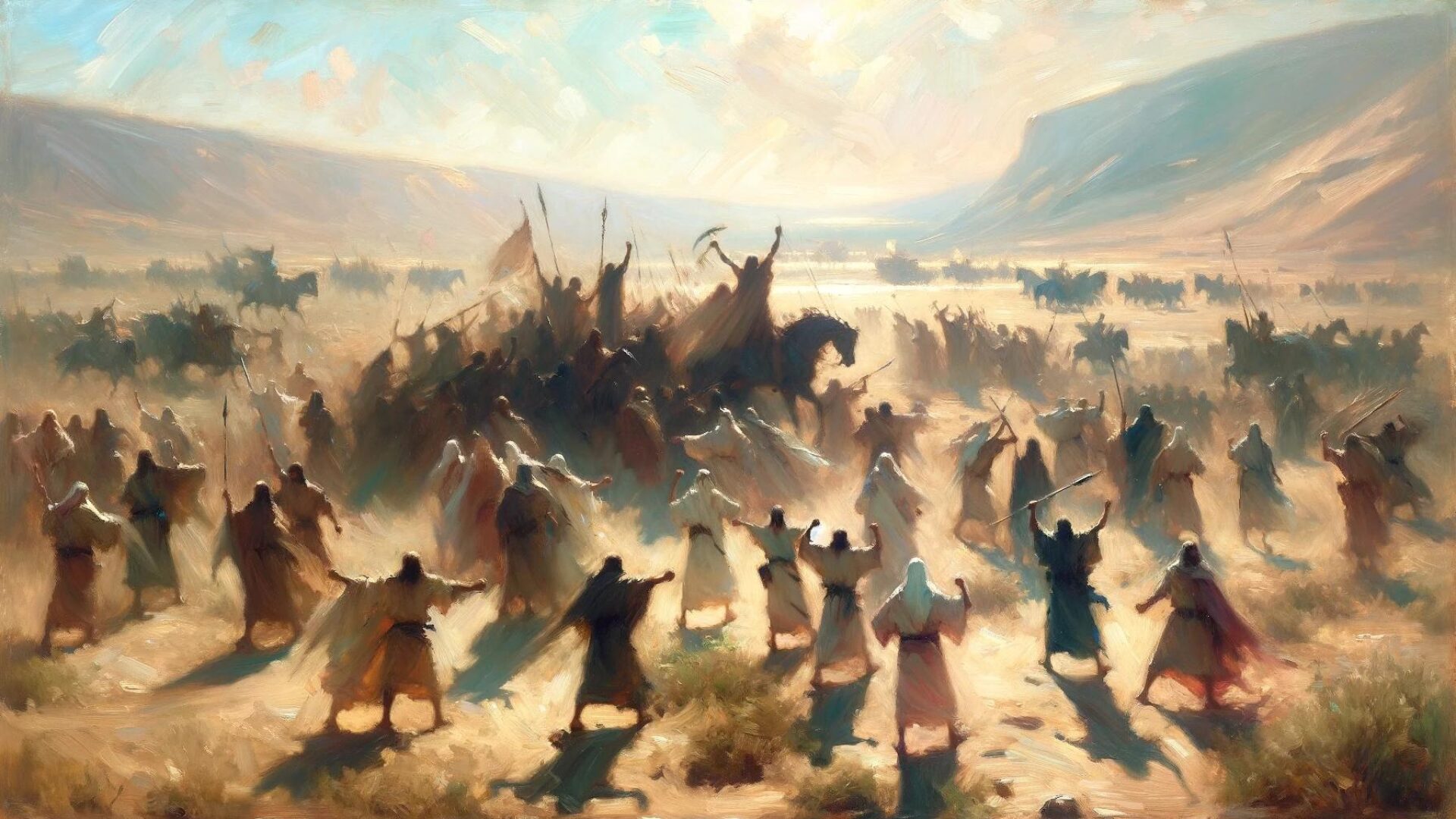The book of Leviticus lays out many of the laws and rituals around ancient Israelite worship and sacrifice. One of the most prominent sacrifices described is the burnt offering. This ritual offering provides deep insight into the religious worldview and spiritual practices of ancient Israelites.
The burnt offering was a solemn and sacred act of worship involving the complete burning of an animal on an altar. It held layers of symbolism and meaning for the ancient Israelites, representing complete surrender to God. The offering served multiple purposes, including demonstrating obedience to God, seeking forgiveness for sins, expressing gratitude, and overall dedication to strengthening one’s relationship with the divine.
The Leviticus Burnt Offering in the Old Testament
The burnt offering is described in detail in the book of Leviticus, which outlines the sacrificial system of ancient Israel. Burnt offerings were a type of ritual sacrifice offered to God, usually as a form of repentance, gratitude, or devotion. It was one of several types of offerings mentioned in Leviticus, which also included sin offerings, peace offerings, and grain offerings.
The burnt offering was unique in that it required the entire animal to be consumed by fire on the altar, symbolizing complete surrender and dedication to God. Only certain animals could be used for burnt offerings, including bulls, sheep, goats, turtledoves, and pigeons. The animal had to be without blemish, representing the pure and spotless nature of the offering.
The burnt offering was typically led by the priest, who would perform several rituals before and during the offering. These included washing his hands and feet, laying the wood and animal on the altar, and sprinkling the animal’s blood around the altar. The worshiper would then lay their hands on the animal, symbolically transferring their sins, gratitude, or devotion onto the offering.
The Leviticus Sacrificial System
The burnt offering was an integral part of the Leviticus sacrificial system, which was designed to restore the relationship between God and his people. The system recognized that sin had created a separation between God and humanity, and that sacrifice was necessary to reconcile the two.
Leviticus outlines a complex system of offerings and rituals that were performed by the priests on behalf of the people. The system recognized that not all sins were equal and required different types of offerings and rituals to restore the relationship with God. Burnt offerings were used for general atonement and dedication, while sin offerings were used for specific sins, such as unintentional violations of the law.
The Leviticus sacrificial system was ultimately fulfilled by Jesus Christ, who became the ultimate sacrifice for sin. His death on the cross reconciled humanity to God, making further sacrifices unnecessary. However, the burnt offering and other sacrificial practices outlined in Leviticus remain an important part of Jewish and Christian tradition and provide valuable insights into the ancient Israelite worship.
Symbolism and Rituals of the Burnt Offering
The burnt offering in Leviticus was not merely a random act of sacrifice; it was a highly symbolic and ritualistic act, designed to communicate specific messages between the worshiper and God. The burnt offering, or ‘olah’ in Hebrew, was a voluntary offering that expressed the worshiper’s complete dedication and submission to God’s will.
The symbolism of the burnt offering was deeply tied to the elements used in the sacrifice. For example, the animals offered had to be male, free from blemish, and could be from a variety of species, including cattle, sheep, and goats. The burning of the entire animal signified the worshiper’s complete surrender of the offering to God, representing the worshiper’s desire to give everything to God.
The way in which the burnt offering was offered was also highly ritualistic. The worshiper had to bring the animal to the altar, lay their hands on the animal’s head and confess their sins. This act symbolized the transfer of guilt from the worshiper onto the animal, which would then be consumed by the fire. The burning of the offering signified the forgiveness of sin and the worshiper’s acceptance of God’s mercy.
Other symbolic elements of the burnt offering included the use of salt, which represented the covenant between God and His people, and the use of frankincense, which symbolized the worshiper’s prayers being carried up to heaven. In addition, the fire used in the burnt offering was symbolic of God’s consuming presence, which purified and sanctified the worshiper.
The Rituals of the Burnt Offering
The burnt offering was performed daily in the tabernacle and later in the temple. The priests were responsible for performing the sacrifices, and the rituals surrounding the burnt offering were carefully prescribed. They included washing the internal organs of the animal, cutting it into pieces, and arranging them in a specific order on the altar. The priests would then light the fire and oversee the burning of the offering.
The entire ceremony was accompanied by music and singing, creating a solemn and sacred atmosphere. The worshipers would watch as the offering was consumed by the fire, symbolizing the complete surrender and dedication of both the worshipper and the offering to God.
“And the priest shall burn all of it on the altar as a burnt offering, a food offering with a pleasing aroma to the Lord.” – Leviticus 1:9
The burnt offering was not simply a physical act of sacrifice but a profound and meaningful expression of the worshiper’s relationship with God. By offering their best and most valuable possessions to God, worshipers demonstrated the depth of their love and devotion to the Lord.
Understanding the Purpose of the Burnt Offering
The burnt offering was a central aspect of ancient Israelite worship, and it carried significant meaning and symbolism. The offering was made as a voluntary act of worship and devotion to God. It symbolized the worshiper’s desire to draw closer to God and to seek his favor and forgiveness.
The burnt offering was also a means of atonement for sin. The worshiper would present an unblemished animal as a sacrifice to God, acknowledging their own sinfulness and asking for forgiveness. Through the offering, the worshiper sought to demonstrate their commitment to following God’s laws and to express gratitude for His mercy and forgiveness.
Another purpose of the burnt offering was to express thanksgiving and praise. Israelites would offer burnt sacrifices as a way of showing gratitude for God’s blessings and provisions. The offering was a way of expressing their love and devotion to God, recognizing His sovereignty and power over all creation.
The offering was a complex ritual that involved various elements and rituals, each with its own significance and symbolism. The animal was slain, its blood was sprinkled on the altar, and its body was consumed by the fire. These actions symbolized the worshiper’s commitment to God and their desire to be purified and cleansed of sin. The smoke and aroma of the burnt offering also represented the worshiper’s prayers and supplications rising up to God.
Ultimately, the purpose of the burnt offering was to establish a deep and meaningful relationship between the worshiper and God. It was a way of acknowledging God’s sovereignty and power, expressing gratitude and devotion, seeking forgiveness and atonement for sin, and drawing closer to Him. Through the burnt offering, ancient Israelites sought to strengthen their connection with God and to demonstrate their faith and commitment.
Conclusion
The Leviticus burnt offering is a fascinating and integral aspect of ancient Israelite worship, and its significance can still be felt today. Through our exploration of the burnt offering in the Old Testament, we see how it played a crucial role in the Leviticus sacrificial system, and how it was one of many offerings prescribed by God to the Israelites.
We also delved into the rich symbolism and rituals associated with the burnt offering, which shed light on the spiritual and theological meaning behind this practice. We saw that every aspect of the burnt offering ceremony held deep significance for the worshiper, and that the offering was a powerful way to connect with God and seek forgiveness for sins.
By understanding the purpose and significance of the Leviticus burnt offering, we gain a deeper appreciation for the spiritual heritage of the Israelites and the role of sacrifice in their worship. While this ancient practice is no longer observed in the same way, its legacy continues to inspire and enrich our understanding of the Bible and the God it reveals.
FAQ
Q: What is a burnt offering?
A: A burnt offering is a specific type of sacrifice described in the book of Leviticus in the Old Testament. It involved the complete burning of an animal on the altar as an act of worship.
Q: What was the purpose of the burnt offering in Leviticus?
A: The burnt offering served multiple purposes, including demonstrating obedience and devotion to God, seeking purification and forgiveness of sins, and expressing gratitude and thanksgiving.
Q: Were burnt offerings the only type of sacrifices in Leviticus?
A: No, there were several other types of sacrifices mentioned in Leviticus, such as sin offerings, grain offerings, and peace offerings. The burnt offering was just one component of the broader sacrificial system.
Q: What symbols and rituals were associated with the burnt offering?
A: The burnt offering involved specific rituals and symbolism, including the selection of a male animal without blemish, the laying of hands on the animal’s head to transfer sins, and the complete burning of the animal as an offering to God.
Q: Why was the burnt offering significant in ancient Israelite worship?
A: The burnt offering held great significance in ancient Israelite worship because it represented a deep spiritual connection between the worshiper and God. It was a central act of devotion and played a vital role in the religious and cultural life of the Israelites.





